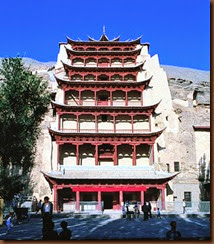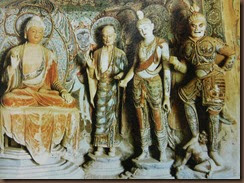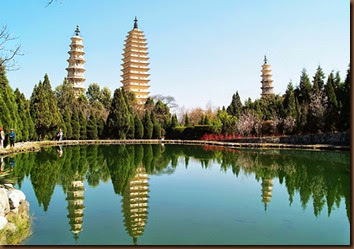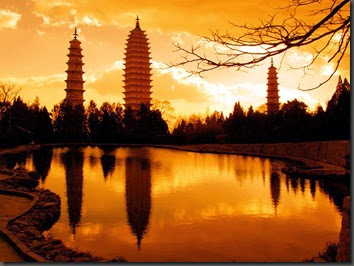The Mogao Caves is also called the Thousand-Buddha Caves, and the caves are on the rock face of the Soughing Dunes, 25 kilometers to the southeast of the Donghuang City in Gansu Province in western China. The place is dry and with very little rainfall, and has abundant sunlight all year round. It also has the four distinctive seasons and high temperature differences between the day and night. The Mogao Grottoes is over 1,600 meters long from north to south and is five floors high, with the highest point at about 50 meters above ground. Currently, it has 492 caves, over 45,000 square meters of frescos, 2,415 colored statues and over 4,000 statues of Apsaras (gods). The Mogao Caves is large in scale and has extremely abundant content and a very long history. The caves, together with the Yungang Caves in Shanxi Province and the Longmen Caves in Henan Province are called the "three great treasure houses of grotto art" in China. Welcome to China, Chinatourguide.com is pleasure to provide service for your China tours, We also provide Thailand tour packages or Cambodia tour packages.

The fine execution and prominent placement of these figures within Cave 231 distinguish them from other images conventionally designated as secular donor images in Dunhuang art. Moreover, the quality and location of these figures indicate a key development in the integration of filial piety with Buddhist devotion at the Mogao site. Medieval Chinese authors frequently described filial piety as the antithesis of Buddhist goals of renouncing family ties. Such goals of renunciation were characterized at the time as Indian and foreign in contrast to the native Chinese concept of filial piety. The incorporation of these secular figures into Buddhist family caves, however, provides compelling evidence that the lines between filial piety and Buddhist devotion were not always as sharply drawn as medieval Chinese textual rhetoric might imply.

Many of the statues are similar, though they show the Buddah with different hand gestures (mudra). Each mudra represents things such as teaching, protecting, and meditating. They also represent one of six different reincarnations of Buddha as a human being. Followers also believe that he has also been reincarnated as animals such as a deer, monkey, birds, tigers, and elephants. These incarnations as an animal are called Jutaku tales, and are widely popular in this culture.

